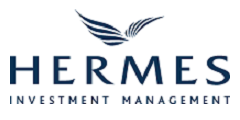As clients begin to look beyond performance as the defining factor in their relationship with wealth advisors, a more transparent and progressive fee structure, focusing on ways to add real value, is the way forward for the industry. It is essential that wealth managers are evaluating progressive strategies to deliver value for money.
Headlines:
- Active vs. Passive in terms of risk access has been identified as a key component in assessing value.
- Clients were looking beyond performance in their relationships. The approach taken was to look at what intellectual capital was on offer and how it could be offered to clients.
- Providing clients access to risks which might have been hard for them to access.
- Offering co-investment opportunities as a way of reducing costs of investment management.
- Outcomes beyond financial performance e.g. looking at investment strategies focused on benefiting environmental and societal causes while still delivering financial returns over time.
- Transparency for the customer regarding fee structure.
Key issues and challenges:
- One of the key problems identified was the question of how to evaluate value for money. One participant pointed out that: “this problem is the representation of immaturity within the industry in regards to assessing value.”
- The general fee structure is based on a legacy fee based structure meaning assessing the rest of the market and trying to create a competitive fee model.
- The participants agreed that there needs to be a transition from the market based cost model to a more transparent value based model. A participant pointed out that: “One problem regarding the transparency issue is who is going to be the first mover.”
- Completely laying out your cost and fee structure to the client might lead to increased questioning and scrutiny by the customers. Therefore, being first would be a brave and bold step. Another question posed was, how to assess value on a risk adjusted basis.
- The model Hermes was following first assessed the market rate and tried to be competitive. The next step was to articulate to clients that they were in fact adding value in terms of the fees they were charging on the risk adjusted alpha they were delivering.
- Another point made was that it is important that the business and fee structure needs to be assessed from the top down to define the appropriate margins for the business.
- Higher business costs have an effect on the fee structure and competitiveness, therefore in order to add value and stay competitive, businesses should differentiate themselves.
- Although expensive, shareholder engagement assessment is presented as giving useful insights in terms of adding qualitative data to the more quantitative metrics, especially regarding ESG risk opportunity factors
- Despite the expense Hermes found that these additional data sources enabled them to explore other revenue streams as well as new product development in regards to ESG integration.
- The participants were in agreement that the margins of the past are not sustainable and will settle at an appropriate level which will be more reflective of actual value creation.
- Another participant mentioned the difficulty in assessing the value of the clients’ service. Since relationship management is an integral part of wealth management/private banking participants find it very difficult to quantify or measure the relationship their private bankers have with their clients.
- Nevertheless factors outside of investment performance are becoming more important not only in the assessment for the overall value add for the client but also in the evaluation of the relationship to the client.
- When the question was raised: “What is more important in retaining and acquiring new clients? - service or investment performance?” the participants agreed that service plays a higher role especially when it comes to client retention and further recommendations.
Conclusions and solutions:
- A more transparent and more progressive fee structure, focusing on ways to add real value, is the way forward for the industry
- Nevertheless being the first one to be more transparent and finding ways to create real “value add” are presenting major challenges
Expert: Harriet Steel, Global Head of Business Development, Hermes Fund Managers



